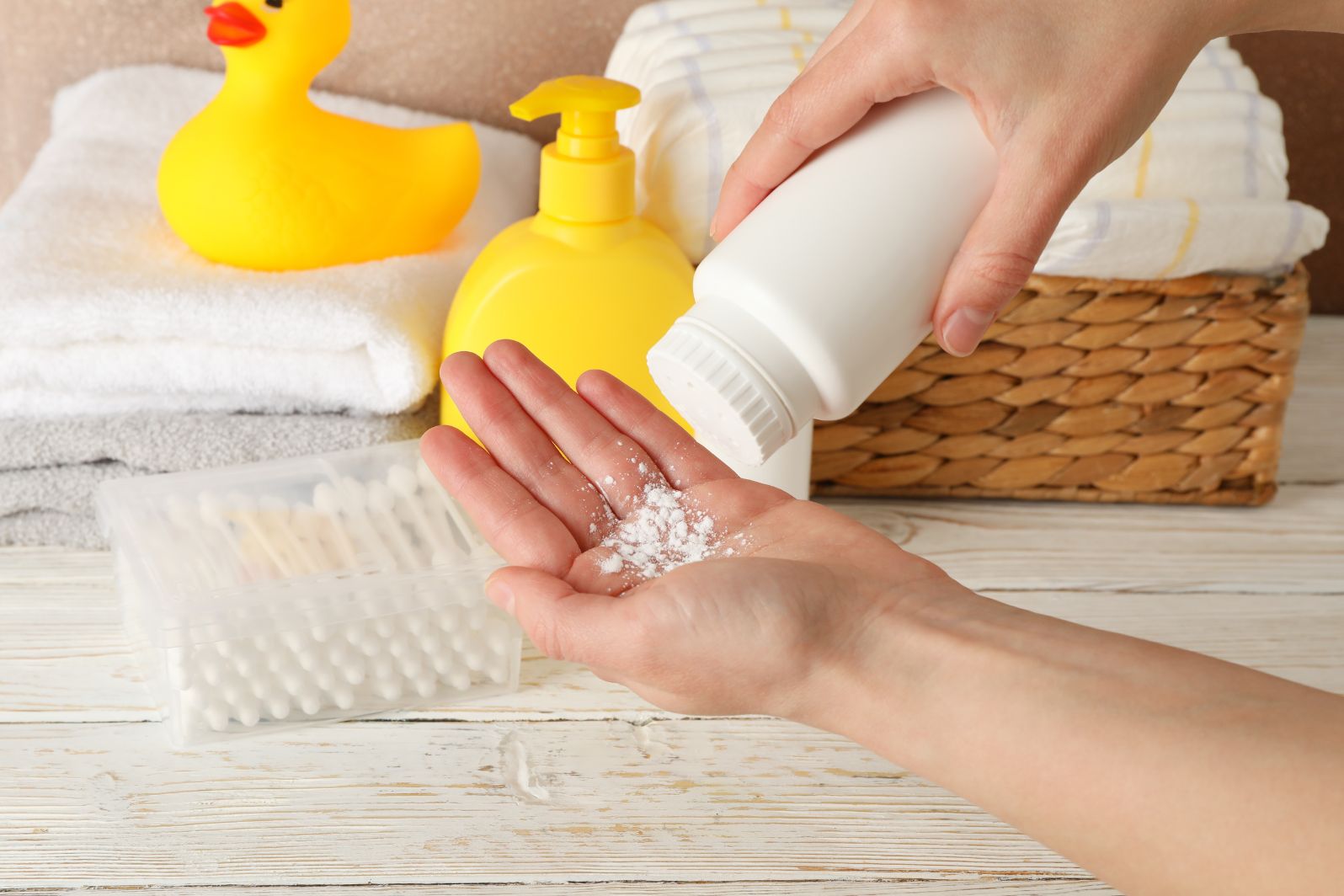
Talcum powder, also known as baby powder, has been a popular household product for decades. It is commonly used to absorb moisture and prevent rashes, especially in babies. However, in recent years, talcum powder has been linked to cancer, particularly ovarian cancer. This has raised concerns among consumers and health professionals alike, prompting many to question the safety of talcum powder.
Talcum powder is made from talc, a mineral that is composed of magnesium, silicon, and oxygen. It is a soft and silky powder that is used in a variety of products, including cosmetics, food, and pharmaceuticals. Talcum powder is often used as a deodorant, body powder, or as a base for cosmetics such as eyeshadow and blush.
It is also commonly used to prevent chafing and rashes and can be applied to areas such as the feet and groin. However, there has been controversy surrounding the safety of talcum powder, as some studies have suggested a link between talc use and ovarian cancer. As a result, many companies have started producing talc-free alternatives. Despite this, talcum powder remains a popular and widely used product.
The Link Between Talcum Powder and Cancer
The link between talcum powder and cancer was first discovered in the 1970s when researchers found talc particles embedded in ovarian tumors. Since then, several studies have been conducted to investigate the link between talcum powder and cancer. The majority of these studies have found a small but significant association between talcum powder use and ovarian cancer.
This association is believed to be due to the fact that talc, a mineral composed of magnesium, silicon, and oxygen, is often found naturally near asbestos, a known carcinogen. As a result, talcum powder may sometimes contain traces of asbestos, which can increase the risk of cancer.
However, the exact mechanism by which talcum powder may cause cancer is still not fully understood. Some researchers believe that talc particles may enter the body through the vagina and travel to the ovaries, where they can cause inflammation and damage to the DNA, leading to the development of cancer.
Despite the evidence linking talcum powder and cancer, many talc-based products are still widely available on the market. Some companies have even faced lawsuits from consumers who allege that their talcum powder products caused their cancer. As a result, many health experts recommend avoiding talcum powder products, especially for women who use them regularly for feminine hygiene purposes.
How Does Talcum Powder Cause Cancer?
The exact mechanism by which talcum powder causes cancer is not fully understood. However, it is believed that when talcum powder is applied to the genital area, it can travel through the reproductive tract and reach the ovaries. Talc particles may then become embedded in the ovarian tissue, leading to inflammation and the formation of tumors.
While talcum powder has been used for decades and is generally considered safe for use, there has been a growing concern about its potential link to ovarian cancer. Although more research is needed to fully understand the mechanism by which talcum powder may cause cancer, some studies have suggested that long-term use of talcum powder in the genital area may increase the risk of ovarian cancer. As a result, many women have chosen to avoid talcum powder and opt for alternative products that are deemed safer. It is important for individuals to discuss any concerns with their healthcare provider and to make informed decisions about their use of talcum powder. Individuals who have been diagnosed with ovarian cancer and have a history of using talcum powder products may be able to file a Talcum powder cancer lawsuit. Such lawsuits may seek compensation for medical expenses, lost wages, pain and suffering, and other damages caused by the negligent actions of the talcum powder manufacturer. In order to be eligible to file a talcum powder cancer lawsuit, the individual must have used the product on the genital area for a long period of time—typically, longer than 10 years. It is also essential that the individual has been diagnosed with ovarian cancer, as there is no guarantee that talcum powder use will cause ovarian cancer.
Women who use talcum powder in the genital area are at the greatest risk of developing ovarian cancer. The risk may be higher for women who use talcum powder on a regular basis or for an extended period of time. However, it is important to note that not all women who use talcum powder will develop cancer.
Talcum powder is a common household product made from talc, a naturally occurring mineral composed of magnesium, silicon, and oxygen. Historically, talcum powder has been used for a variety of personal care applications, including for absorbing moisture and reducing friction. In recent years, a number of studies have suggested that the use of talcum powder may be associated with a variety of health risks, particularly ovarian cancer, and mesothelioma. These risks have led to a number of lawsuits against talcum powder manufacturers, alleging that their products have caused serious illnesses.
The first talcum powder lawsuit was filed in 2013 by Jacqueline Fox, who alleged that her ovarian cancer was caused by her decades-long use of Johnson & Johnson’s talcum powder products. The lawsuit, which was ultimately settled in 2016, raised awareness of the potential link between talcum powder and ovarian cancer and opened the door for similar lawsuits. Since the Fox case, thousands of lawsuits have been filed by women who allege that their ovarian cancer was caused by the use of talcum powder.
The potential link between talcum powder and ovarian cancer has been studied for decades. In the 1970s, researchers at Harvard University discovered talc particles in ovarian and cervical tumors, suggesting a potential link between talcum powder and cancer. Since then, multiple studies have been conducted, with some suggesting a link between talcum powder and ovarian cancer, while others have found no significant association. The National Cancer Institute’s website states that “the evidence on the use of talcum powder as a risk factor for ovarian cancer is inconclusive.”
Despite this inconclusiveness, several high-profile talcum powder cancer lawsuits have resulted in multi-million dollar jury awards. In 2018, a jury in St. Louis awarded $4.7 billion to 22 plaintiff women who alleged that their ovarian cancer was caused by Johnson & Johnson’s talcum powder products. The jury found that Johnson & Johnson had failed to provide adequate warnings to consumers about the potential risk of cancer associated with the use of its talcum powder.
These lawsuits have raised awareness of the potential risks associated with talcum powder and prompted many consumers to look for alternative products. While the potential link between talcum powder and cancer is still being studied, it is important for consumers to be aware of the potential risks associated with the use of talcum powder and to make informed decisions about their personal care products.
For decades, talcum powder has been used as a personal hygiene product due to its absorbent properties and to reduce friction. However, in the last few years, there has been a growing concern regarding talcum powder and its connection to certain types of cancer. There have been a number of lawsuits filed against Johnson & Johnson, the leading manufacturer of talcum powder, alleging a link between their product and the development of ovarian cancer.
The use of talcum powder has been associated with an increased risk of ovarian cancer, as particles of talc can travel through the reproductive system and become lodged in the ovaries. This is especially true for women who use talcum powder on the genital area. Studies conducted in the 1970s found a link between regular talcum powder use and ovarian cancer, and further research has confirmed this connection. A 2020 study conducted by the American Cancer Society found that women who regularly used talcum powder on their genital area had a 24% increased risk of developing ovarian cancer.
In addition to the evidence connecting talcum powder to ovarian cancer, a number of lawsuits have been filed against Johnson & Johnson, claiming that their product is responsible for the development of cancer in its users. The plaintiffs allege that despite knowing about the potential health risks associated with talc, Johnson & Johnson failed to warn customers about these dangers. In some cases, the plaintiffs have been awarded large sums in damages after the jury found that Johnson & Johnson was negligent in failing to warn the public about the potential risks of talc.
The legal ramifications of a talcum powder cancer lawsuit are significant, as it can be difficult to prove that the use of talc directly caused the development of ovarian cancer. However, the evidence connecting talcum powder to an increased risk of ovarian cancer is compelling, and if the plaintiffs can prove that Johnson & Johnson was aware of this risk and failed to warn the public, there is a good chance that they may be successful in their case.
It is important to be aware of the potential risks associated with talcum powder and take appropriate steps to protect yourself. If you or someone you know has been diagnosed with ovarian cancer after using talcum powder, it may be advisable to seek legal advice and determine whether you have a case against Johnson & Johnson. Understanding the link between talcum powder and cancer is key to protecting your health and well-being.
Prevention and Precautions
To reduce the risk of developing ovarian cancer, it is recommended that women avoid using talcum powder in the genital area. Alternatives such as cornstarch-based powders are a safer option. If talcum powder must be used, it should be applied away from the genital area, such as on the thighs or feet.
The use of talcum powder in the genital area has been linked to an increased risk of ovarian cancer. To minimize this risk, experts recommend that women switch to cornstarch-based powders as a safer alternative. If talcum powder is still preferred, it should be applied to areas away from the genital region, like the thighs or feet. By taking these precautions, women can help protect themselves from this potentially deadly disease.
Conclusion
The link between talcum powder and cancer is a complex issue that requires further research. While the evidence is not conclusive, it is important to be aware of the potential risks associated with talcum powder use. Women should be cautious when using talcum powder and consider alternatives to reduce the risk of developing ovarian cancer.
Studies have suggested that talcum powder particles can travel through the genital tract and reach the ovaries, leading to inflammation and the formation of cancerous cells. However, other research has not found a significant link between talcum powder and ovarian cancer. Despite the lack of conclusive evidence, it is still recommended that women avoid using talcum powder in the genital area and opt for alternative products such as cornstarch-based powders or body lotions. It is also important to discuss any concerns with a healthcare provider and undergo regular cancer screenings.






